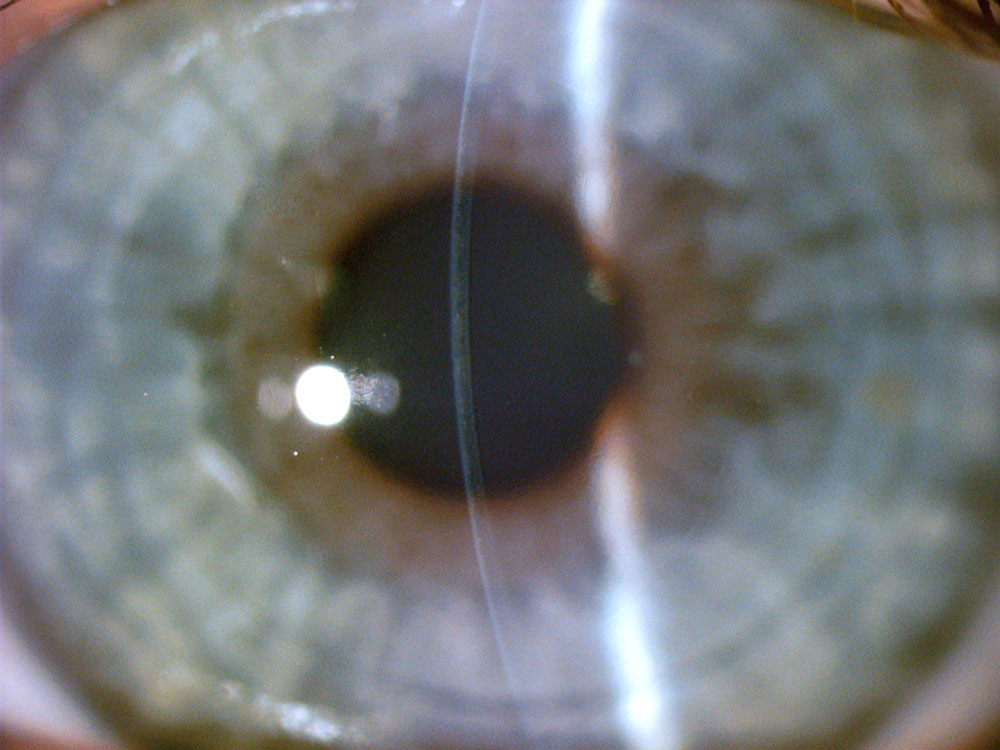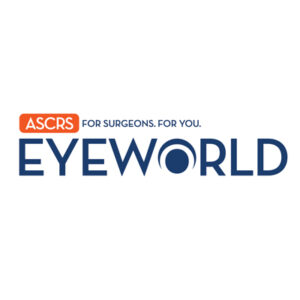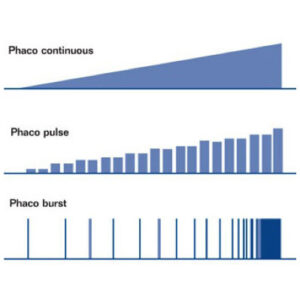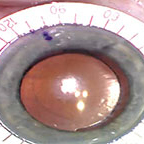For a more recent article on this topic, see “SMILE: Acceptance, updates, and more.”
Cover Feature: Controversies in ophthalmology
June 2016
by Ellen Stodola
EyeWorld Senior Staff Writer
The procedure is catching on in many countries around the world
The SMILE (small incision lenticule extraction) procedure (Carl Zeiss Meditec, Jena, Germany) is increasing in popularity, with many studies on its results and how it compares to LASIK. Though it does not have as long of a track record as LASIK, which has been used for around 2 decades, SMILE is gaining ground, with particular application for patients with myopia.
Jesper Hjortdal, MD, clinical professor, Department of Ophthalmology, Aarhus University, Aarhus, Denmark; Walter Sekundo, MD, chairman, Department of Ophthalmology, Philipps University of Marburg, Marburg, Germany; and Sri Ganesh, MD, chairman and managing director, Nethradhama Hospital, Bangalore, India, commented on their experience with SMILE, advantages and disadvantages compared to LASIK, and potential applications in the future.
Predictability and safety of SMILE and LASIK
In both short-term and long-term results, Dr. Hjortdal said that predictability and safety results seem similar between SMILE and LASIK. A recent meta-analysis1 found SMILE and femtosecond LASIK were comparable in terms of safety and efficacy but that SMILE may create fewer dry eye symptoms than femtosecond LASIK, and corneal sensitivity was restored faster after SMILE compared with femtosecond LASIK, he said.
Because LASIK has been in use for about 20 years, Dr. Sekundo doesn’t see the introduction of SMILE as controversial. LASIK is a well-proven and highly developed procedure, he said, but it’s at the end of its development, and Dr. Sekundo doesn’t think anything can be done to make LASIK better because “we’ve gotten to the stage where lasers and results are getting close to the variation in refraction.” Refraction is dynamic, and from this point of view, LASIK/femto LASIK is a great procedure. SMILE is gaining popularity because patients desire this approach with a small incision and no flap, he said.

Source: Jesper Hjortdal, MD
Dr. Ganesh started doing SMILE about 3.5 years ago. Before that, he did a lot of femto wavefront LASIK. He thinks that SMILE is a better procedure, mentioning the risk of ectasia and the common problem of postop dryness with LASIK, as well as concerns with the LASIK flap.
After first hearing about SMILE, Dr. Ganesh said he researched reports that indicated visual recovery was not as good as with LASIK. Now, he has performed close to 4,000 procedures and said that he rarely chooses LASIK anymore because he thinks SMILE is the better procedure. “As I refine my nomograms and techniques, I’m getting very good results,” Dr. Ganesh said. “I personally think that this is the future of refractive surgery.”
Advantages and disadvantages
There are a lot of benefits to SMILE for patients, Dr. Ganesh said. It’s a virtually painless procedure and is quick. There is no long-term dryness, he said.
After doing a comparative study between SMILE and femto LASIK several years ago, Dr. Ganesh said the refractive predictability of SMILE was found to be similar to femto LASIK. At 3 months postop, quality of vision and aberrations were better than wavefront LASIK. It was found that the optical zones were larger with SMILE, which translates to better night vision. There were not as many complaints of night vision problems as with LASIK. The accuracy of correction and safety were almost the same between the procedures, Dr. Ganesh added.
The biggest advantage many see with SMILE compared to LASIK is the lack of a flap. “By decreasing the incision almost down to 2 mm, we eradicate several problems associated with the flap,” Dr. Sekundo said. SMILE has no pain, or only for a short period of time, and there are no problems with flap dislocation.
On the other hand, SMILE is a much more demanding procedure, Dr. Sekundo said, and it is largely dependent on the laser and the surgical skill of the surgeon. The learning curve becomes evident in presentations at meetings, he added.
In comparative studies, SMILE performs better in terms of stability, especially in high myopia, Dr. Sekundo said. Additionally, the regression rate with SMILE is smaller compared to excimer laser-based procedures.
“The main advantages of SMILE are that the treatment is a flap-free procedure with minimal distortion of the corneal surface, and it does not induce spherical aberration possibly due to the physical removal of an intrastromal lenticule,” Dr. Hjortdal said.
However, SMILE does have a slightly slower recovery of visual acuity on the first day after surgery. “With increasing refinement of laser settings, this difference is very small,” Dr. Hjortdal said. “After 1 week, most experienced surgeons do not find a difference.”
Centration could be a possible issue in SMILE, Dr. Hjortdal said, but he noted that studies have shown a comparable increase in coma-like aberrations after SMILE and LASIK. “Complications related to lenticule removal are a potential concern in SMILE surgery, but this occurs very rarely,” he said.
How SMILE compares to other procedures
For correction of low myopia (less than 3 D) there are possibly no differences between the outcomes of modern surface ablation techniques, LASIK and SMILE, Dr. Hjortdal said, but prospective controlled studies are needed. “Concerning higher myopia (more than 6 D), we have found SMILE superior to LASIK in predictability and safety,” he said. “We do more than 95% of our surgeries for higher myopia as a SMILE procedure.”
Dr. Ganesh recently worked on a study that will be published shortly comparing SMILE to PRK for low myopia. With PRK, there may be pain for a couple of days following surgery, and there is a need for long-term medication. Some patients may develop haze. “In our study, we found that the safety was better with SMILE,” he said. PRK is now widely being used for low myopia, Dr. Ganesh added. Though refractive results were similar between the 2, he said that quality of vision in terms of aberrations was better with SMILE.
Dr. Sekundo added that PRK is a great procedure but not for higher myopia; SMILE is preferable in these cases. When he counsels patients, Dr. Sekundo provides all of the options. However, for patients who have certain degrees of myopia, he won’t offer PRK or LASIK because he doesn’t think they are good choices.
Future applications of SMILE
Dr. Ganesh said that although SMILE cannot currently be used for hyperopia and enhancements, trials for hyperopia applications seem “quite promising.” It’s an evolving procedure thats getting more refined, he said. At this point in time, LASIK is very refined, while SMILE is still in its infancy. “But even SMILE in its infancy is as good or better than advanced LASIK,” Dr. Ganesh said. “As it keeps developing, it’s going to get better.”
Dr. Hjortdal said that the indications for the SMILE procedure could possibly expand to include hyperopic treatments and an optimization of astigmatic corrections. “Refractive corrections for presbyopia, such as ‘blended vision’ may also be possible,” he added.
Dr. Sekundo is currently conducting the second phase of a study looking at SMILE in hyperopic patients, and he said different SMILE possibilities have been explored by Indian, Egyptian, and Singaporean colleagues.
“SMILE requires a skilled surgeon,” he said. Dr. Sekundo added that he sees SMILE as better in the long term. Short-term results are usually equal to LASIK, but beyond 6 months, SMILE seems better. Initially, SMILE took around 2 minutes to perform, but currently, the procedure takes 24 seconds. Dr. Sekundo said he has not seen a single suction loss in the last 4 years, when the fast energy settings were implemented in his routine. In the future, he thinks the procedure will get down to around 10 seconds, with the high quality of cuts.
It’s unfair to compare LASIK and SMILE, Dr. Sekundo said, because it’s comparing an old and well-proven technology—LASIK—to a new technology—SMILE. However, he noted that SMILE has been around for nearly a decade now and is continuing to evolve.
Reference
- Zhang Y, et al. Clinical outcomes of SMILE and FS-LASIK used to treat myopia: a meta- analysis. J Refract Surg. 2016;32:25665.
Editors note
Dr. Ganesh and Dr. Sekundo have financial interests with Carl Zeiss Meditec. Dr. Hjortdal has no financial interests related to his comments.
Contact
Ganesh: chairman@nethradhama.org
Hjortdal: jesper.hjortdal@clin.au.dk
Sekundo: sekundo@med.uni-marburg.de



